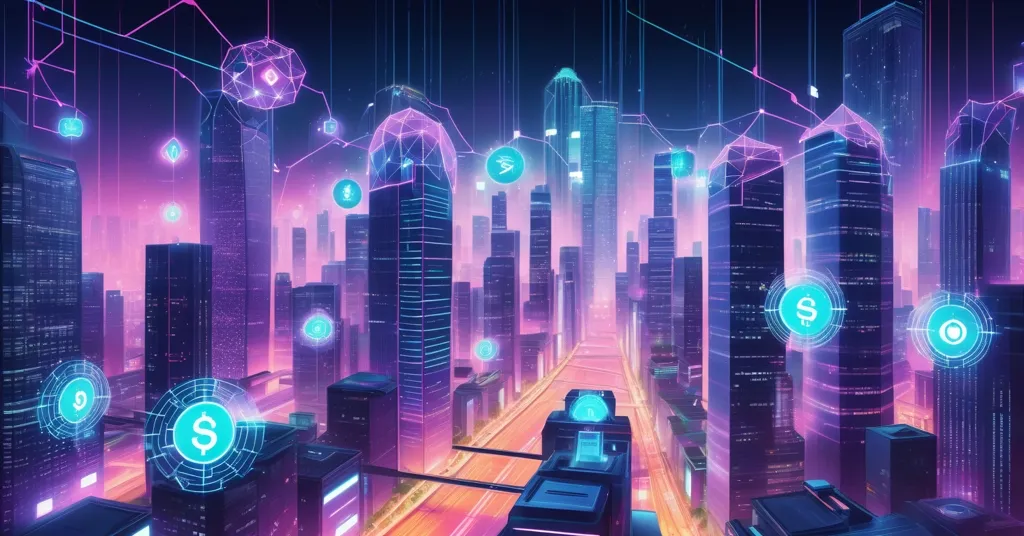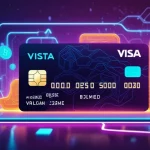Ripple Partners with BDACS to Push XRP and RLUSD in South Korea’s Crypto Market

Ripple’s Bold Move with BDACS: Pushing XRP and RLUSD into South Korea’s Crypto Frenzy
Ripple has landed a strategic punch in South Korea, partnering with local cryptocurrency custodian BDACS to drive XRP and its stablecoin RLUSD straight into the institutional arena. Announced on August 5, 2025, this collaboration harnesses Ripple Custody for secure, regulated storage of digital assets, targeting a nation that’s become a pulsating hub for blockchain adoption in Asia. But with regulatory tightropes, XRP’s trust baggage, and a market fueled by desperation as much as innovation, can Ripple deliver real value or just more hype?
- Core Partnership: Ripple and BDACS join forces to provide institutional custody for XRP and RLUSD via Ripple Custody.
- Market Reach: Integration with top South Korean exchanges like Upbit, Coinone, and Korbit targets big players.
- Strategic Focus: Busan’s blockchain regulation-free zone becomes a testing ground for stablecoin and tokenization projects.
Ripple’s South Korean Gambit: A Custody Power Play
This partnership, which began taking shape in February 2025, isn’t just a footnote in Ripple’s global playbook—it’s a calculated bid to win over institutional wallets in one of the most crypto-obsessed markets. BDACS, a South Korean firm specializing in digital asset custody, rolled out support for XRP on August 5, 2025, leveraging Ripple Custody in partnership with BDACS to ensure secure storage and management for high-stakes clients. Think of Ripple Custody as a digital bank vault for businesses—built to lock down crypto assets with compliance and security that traditional finance demands. BDACS itself celebrated the launch with palpable excitement, signaling the weight of this move in the local scene:
“XRP is now live on BDACS! We’re thrilled to offer custody support for #XRP, one of the most popular digital assets in #Korea, to our institutional clients. This launch strengthens our long-standing partnership with #Ripple and underscores our commitment to the Korean market.” – BDACS (@BDACSKorea), August 5, 2025.
For those just dipping their toes into crypto, let’s break it down. XRP is the native token of the XRP Ledger, a blockchain engineered for lightning-fast, low-cost transfers, often used as a bridge for cross-border payments. RLUSD, Ripple’s U.S. dollar-backed stablecoin, is pegged 1:1 to the dollar to dodge the stomach-churning volatility of most cryptocurrencies—making it a safer bet for risk-averse institutions. This partnership also integrates with South Korea’s heavyweight exchanges—Upbit, Coinone, and Korbit—smoothing the path for big players to access XRP without the usual headaches of security or regulatory compliance, as highlighted in recent news on institutional XRP custody in Korea.
But why BDACS? While hard data on their market share is scarce, their local expertise and focus on compliant solutions likely made them Ripple’s pick to navigate South Korea’s complex financial landscape. The real question lingers: is BDACS the golden ticket Ripple needs for street cred in this market, or just another name on a crowded roster?
Why South Korea Matters: A Crypto Lifeline Amid Economic Grind
South Korea isn’t just another dot on Ripple’s map—it’s a goldmine of opportunity shaped by raw necessity. A Hana Institute of Finance report pegs crypto ownership at roughly 27% among South Koreans aged 20-50, with 14% of their financial portfolios tied to digital assets, as detailed in recent South Korean crypto adoption stats. That’s nearly one in four people betting on blockchain, and not always out of starry-eyed belief in tech. Youth unemployment hovers at 6.6%—double the national average—while stagnant wages and unaffordable real estate slam the door on traditional wealth-building. Crypto, for many, isn’t a gamble; it’s a middle finger to a broken system.
The numbers scream growth. South Korea’s crypto market nearly doubled to 108 trillion won (about $80 billion USD) in the second half of 2024, with 9.7 million verified users—a 25% spike from mid-year. Meanwhile, 70% of locals plan to boost their crypto know-how, per the same report. Desperation or innovation? Probably both. Ripple’s stepping into a pressure cooker where hope and hardship collide, and their timing aligns with South Korea’s experimental streak—namely, Busan’s blockchain regulation-free zone. This designated sandbox offers tax breaks and relaxed rules for pilot projects, making it a perfect lab for RLUSD use cases and tokenization, which we’ll unpack next.
RLUSD and Tokenization: Testing the Future in Busan
RLUSD isn’t just a side project for Ripple—it’s a cornerstone of their vision to merge blockchain with real-world finance. As a stablecoin pegged to the U.S. dollar, it offers predictability in a market notorious for wild swings, targeting institutional players who want exposure without the heartburn. In Busan’s regulation-free zone, Ripple and BDACS aim to push RLUSD into practical applications, especially tokenization, with notable traction in Busan’s blockchain projects for RLUSD adoption. For the uninitiated, tokenization means turning tangible assets—think real estate or stocks—into digital tokens on a blockchain. It’s like slicing a house into tradeable digital shares, opening up fractional ownership and liquid markets for stuff once locked behind red tape.
Ripple’s betting big on this space, projecting the crypto custody market could hit $16 trillion by 2030, with tokenized assets potentially accounting for 10% of global GDP. That’s a sexy number, sure, but let’s not kid ourselves—hitting it depends on trust and adoption levels crypto hasn’t fully proven yet. Still, RLUSD’s global peg gives it an edge over local alternatives, and Ripple’s tie-up with Chainlink to integrate it into Ethereum-based DeFi (decentralized finance) protocols adds muscle. DeFi, for newbies, is finance without middlemen—lending, trading, or earning interest directly on the blockchain. But with South Korean banks like Kakao Bank and Kookmin Bank eyeing Korean Won-backed stablecoins, RLUSD faces homegrown competition. Can a dollar-based stablecoin win in a market hungry for local solutions? That’s the multi-billion-won question, and some perspectives can be explored on platforms like Quora regarding RLUSD’s impact in South Korea.
The Dark Side of the Hype: Ripple’s Baggage and Market Risks
Let’s cut the fluff—Ripple isn’t riding into South Korea on a white horse. XRP’s price, snoozing at $2.95 with a 0.35% drop in the last 24 hours and a year-to-date decline of 2.55%, isn’t exactly the rocket fuel investors crave. Worse, Ripple’s long been haunted by centralization fears. With 38 billion XRP (out of a total 100 billion supply) held in escrow, critics argue Ripple could theoretically manipulate prices by controlling token releases. That’s a red flag for anyone who worships decentralization—the beating heart of crypto’s ethos. Ripple’s CTO David Schwartz has fired back, claiming the company runs just 1% of XRP Ledger validators since July 2023, meaning they don’t control the network, as discussed in depth in this analysis of XRP decentralization concerns. Still, that massive reserve lingers as a trust hurdle.
Then there’s the legal mess. Ripple’s ongoing battles in the U.S. over whether XRP is a security cast a shadow, even in South Korea where compliance is non-negotiable. Add to that a market where young investors dive into crypto out of financial desperation, not some cypherpunk dream, and the stakes get grim. Regulatory headaches aren’t helping—strict bank account linking rules for exchanges and volatility fears (cited by 56% of investors) keep the space on edge, despite planned crypto legislation by late 2025. Ripple’s focus on regulated custody might dodge some skepticism, but it’s no guarantee against a speculative bubble bursting. True Bitcoiners might scoff anyway—centralized custody solutions are a far cry from the self-custody freedom of a hardware wallet. Is Ripple building a bridge to TradFi, or just a shiny cage?
Regional Momentum and the Global Stablecoin Race
South Korea isn’t Ripple’s only Asian chess piece. Across the sea, Japan’s making waves, with Angne Linge, Head of Growth at WEFI, noting XRP’s rising clout:
“Approximately 80% of the firms are ready to adopt XRP as a global payment platform.” – Angne Linge, Head of Growth at WEFI.
That’s a jaw-dropping stat, underlining XRP’s potential as a cross-border payment tool in Asia. South Korea slots into this regional trend with a 22% crypto adoption rate in the Asia-Pacific—nearly triple the global average—rubbing shoulders with high rollers like Thailand and Indonesia. Ripple’s not playing small ball either; global partnerships with Revolut, Zero Hash, and Unicambio in Portugal (for payments to Brazil) show RLUSD’s ambitions stretch far beyond Busan, with further context on their strategy available at Ripple and XRP’s profile. Yet, in the stablecoin race, giants like Tether (USDT) and Circle (USDC) loom large. RLUSD’s edge might lie in niche DeFi integrations and institutional trust, but it’s David versus Goliath out there, with ongoing conversations in communities like Reddit discussions on Ripple’s South Korean moves.
For our Bitcoin-maximalist crowd, let’s be real: while Ripple chases institutional gold with custody and stablecoins, Bitcoin remains the decentralized king. Custody solutions might lure suits, but they’ll never sway HODLers who live by “not your keys, not your crypto.” Ripple’s play is practical, not revolutionary—necessary for TradFi adoption, but a compromise on crypto’s core promise of freedom.
What’s Next for Ripple in South Korea?
Ripple’s move with BDACS is a high-stakes bet on South Korea, a market where crypto isn’t just a trend—it’s a lifeline for many grappling with economic quicksand. By doubling down on institutional custody and stablecoin utility, they’re gunning for a future where blockchain isn’t just for degens but for boardrooms too, as recent updates on XRP custody in South Korea suggest. Yet, the path is littered with traps: regulatory uncertainty, XRP’s trust issues, and competition from local stablecoins. Could we see more Asian partnerships or deeper DeFi integrations on the horizon? Will Ripple and BDACS redefine South Korea’s crypto game, or just pile on another layer of hype? We’re watching every block, cutting through the noise with no bullshit attached.
Key Takeaways and Questions
- What’s the significance of Ripple’s partnership with BDACS in South Korea?
It paves the way for institutional adoption of XRP and RLUSD through secure, compliant custody via Ripple Custody, tapping into major exchanges like Upbit to boost mainstream credibility in a blockchain-hot market. - How does RLUSD factor into Ripple’s strategy in Busan?
RLUSD, as a dollar-pegged stablecoin, drives stablecoin use cases and tokenization experiments in Busan’s regulation-free zone, aiming to digitize real-world assets with minimal bureaucratic friction. - Why is South Korea a prime target for crypto initiatives?
With 27% of 20-50-year-olds holding crypto amid economic struggles, plus progressive policies like Busan’s zone and bank interest in stablecoins, it’s a desperate yet fertile ground for blockchain breakthroughs. - What obstacles could stall Ripple’s progress in the region?
XRP’s centralization concerns, a hefty 38 billion token escrow stash, U.S. legal battles, and local stablecoin rivals could erode trust, even with strong custody solutions in place. - How does the projected $16 trillion crypto custody market tie into this?
It highlights massive potential for institutional capital in crypto, underscoring the need for secure solutions like Ripple Custody to bridge traditional finance and blockchain, though adoption remains unproven. - Can Ripple’s custody focus compete with Bitcoin’s decentralized ethos?
It’s a pragmatic step for TradFi integration, but Bitcoin purists might see it as a betrayal of crypto’s self-custody roots—freedom doesn’t come with a middleman.



